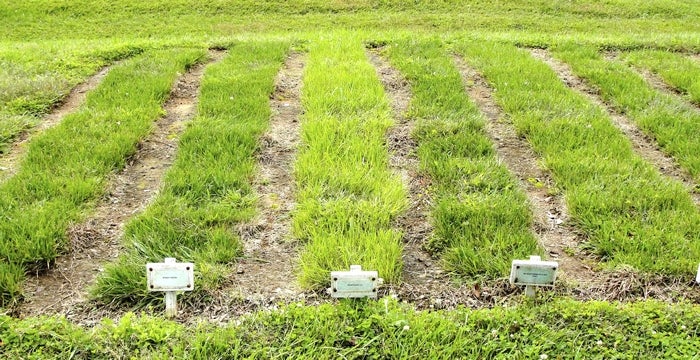Darrell Blackwelder: It’s not too early to think about lawns
Published 12:00 am Friday, February 27, 2015

- Cooperative Extension Turf test plots at the Agricultural Center. It's time to start working on your lawn.
Believe it or not, now is the time of year when homeowners should be considering spring maintenance for their cool season fescue lawns.
Excessively cold, snowy weather has many people wondering when they can initiate over-seeding, fertilization and other outdoor chores. The winter snows and frigid temperatures have delayed lawn fertilization for fescue lawns at least two weeks. Mid-February through late March is the time to fertilize cool season fescue lawns for the best results.
Cool season fescue lawns need to maintain a recommended fertilization schedule in the spring. The greatest effect on growth and development of cool season lawns is fertilization on a regular basis. Turf specialists at N.C. State University recommend 1 pound of actual nitrogen per 1,000 square feet for cool season fescue and fescue lawn blends in the spring.
Special blended lawn fertilizers with slow release fertilizers are available pre-measured, usually in 5,000 or 10,000 square foot bags which are designed to eliminate the guesswork out of proper fertilization. Grade fertilizers without slow release can be used but the end results are often excessive growth during the spring, becoming, in most cases, a nightmare to maintain.
This same time period is also an opportune time to over-seed fescue. Fescue germinates well in the spring but new lawns will struggle during the hot summer months. Lawns seeded in the late fall or early winter may still be germinating and somewhat weak.
Survivability of the seedlings depends on correct seed bed preparation. Those with weak or thin lawns should prepare by adequately tilling bare or weak lawn areas and incorporating fertilizers and lime before seeding. Core aeration in the spring is generally not recommended, but when lawns are excessively thin or bare, there’s really nothing to loose by coring at this time. Seeds, along with fertilizer falling into the aerator’s holes, germinate quicker and have much better chance of survival than seed on top of bare, clay soil.
Clean wheat straw mulch over seeded areas ensures germination. Tests have proven that a thin layer of clean wheat straw helps maintain moisture, encouraging quick germination of seed.
Now is also time to control winter weeds such as chickweed, henbit and wild garlic. Winter weeds strongly compete with both established and newly emerging fescue seedlings. Premixed weed killers designed for garden hoses work extremely well to control unwanted weeds.
Many homeowners prefer these types of applicators because they require no mixing and the ease of application. It’s best to wait a few weeks after new grass seedlings emerge before applying weed killers.
Those satisfied with their lawn and not over-seeding can apply pre-emergence herbicides now to control summer weeds such as crabgrass. These herbicides also come premixed, impregnated on premium turf fertilizers.
Before applying fertilizer or pesticide, it is very important to know the correct size of the application area. It sounds like a simple concept, but when asked, many homeowners don’t really know the size of their lawns. Avoid waste and endangering the environment by taking a few minutes to correctly measure your lawn area and apply fertilizers and herbicides at the correct rates.
Darrell Blackwelder is an agricultural agent in charge of horticulture with the North Carolina Cooperative Extension Service in Rowan County. Email darrell_blackwelder@ncsu, edu or call 704-216-8700.




